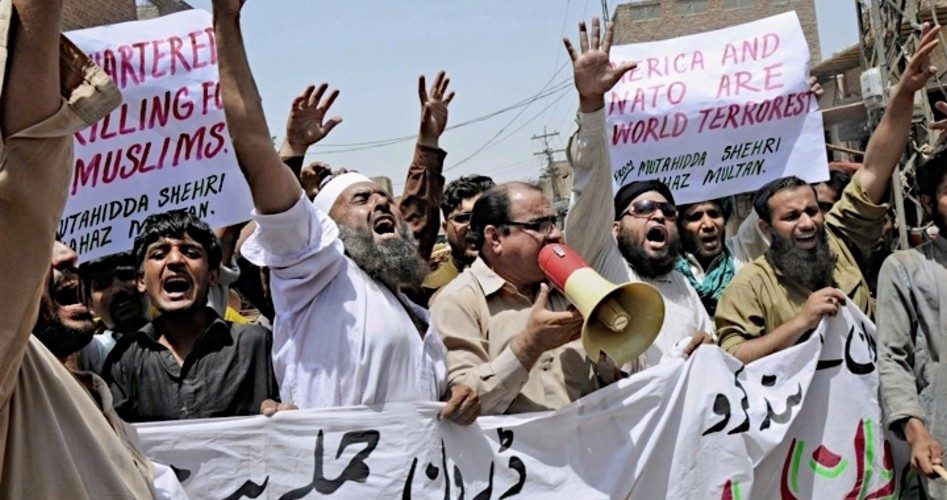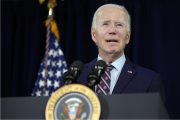
Talks between the United States and Pakistan — ostensible allies in the “war on terror” — have broken down over a failure to come to terms on the reopening of roads through Pakistan that are crucial to the overland deployment of NATO troops and materiel.
The amity between the two nations has been on the decline for months and the strain on the very loose ties that bind Washington to Islamabad worsened when during a visit to Kabul, Afghanistan, U.S. Department of Defense Secretary Leon Panetta told reporters that the United States was “reaching the limits of [its] patience” with Pakistan regarding its alleged harboring of al-Qaeda and other associated militants.
Following Panetta’s public criticism, negotiators from the Pakistani armed forces cancelled a scheduled meeting with officials from the Pentagon. The American Defense Department personnel (described as “senior officials” by one source) spent six weeks in Pakistan expecting to meet with their Pakistani colleagues and hammer out the details of an agreement to end the supply line blockade.
Of course, scores of dead Pakistanis killed by American Hellfire missiles launched by remote control, as part of President Obama’s pet drone program, cannot be helping the situation, either.
Although Pakistan has demanded that the United States cease the drone attacks within its sovereign borders, the Obama Administration has ignored this request, in fact the number of drones in the air, missiles fired by them, and the body count all continue increasing exponentially under orders issued by Barack Obama.
While the government of Pakistan wags its finger at the U.S. for the prosecution of the Predator program, calling it violation of international law, credible reports from inside the government indicate that behind the scenes they have taken another tack — allowing drones to launch from Pakistani airbases and providing intelligence that have helped track targets.
Pakistan’s cooperative posture may have slouched a little recently, however, after the death of Pakistani soldiers deployed along that nation’s border with Afghanistan. Pakistan responded by shutting down the well-worn NATO supply trail that runs through some of the roughest terrain in the country, as well as booting the U.S. and its Predator drones off of an airbase in the southwest region of the country.
Twenty-four Pakistani soldiers were killed last November during that American airstrike, an act for which the United States has refused to explicitly apologize.
Lately, it was assumed by many that the talks would finally come to some mutually agreeable resolution as Pakistan was demanding lower and lower fees from NATO for the right to continue moving along that nation’s roads.
As we reported last week, Pakistan was reportedly willing to charge NATO countries between $1800-2000 for every truck and tanker passing along supply routes bound for Afghanistan.
Previous demands by Pakistan for a $5,000 fee were rejected by the United States, leading to the lower price.
These roads through Pakistan, though treacherous, are a vital part of the final withdrawal of nearly 130,000 soldiers and their equipment from Afghanistan scheduled to be completed by the end of 2014.
“Once the deal is finalized, it will end the standoff between the US and Pakistan over the NATO supply routes, which started in November over the killing of 24 Pakistani soldiers in a NATO air strike on Salala check post,” a Pakistani government official told an Indian news agency.
For the United States, though, the issue isn’t money, it’s militants.
At a recent summit aimed at addressing these issues between the two “allies” in the War on Terror, President Barack Obama and Pakistan’s Prime Minister Yousuf Raza Gilani reportedly made “important progress” in resolving the concerns of both sides regarding Pakistan’s continuing cooperation in the tracking, targeting, and eliminating of those accused by the United States of being members of the Taliban or al-Qaeda.
After the President’s meeting with the Prime Minister, American military commanders met with colleagues from the Pakistani armed forces to discuss the deaths of the Pakistani soldiers last November. That was the last time the leaders of the two nations’ military have sat down at the negotiating table together.
Given this latest diplomatic disintegration, it is obvious to everyone that the United States will not reduce the use of drones in its campaign against suspected “militants.” The government of Pakistan refuses to allow the U.S. military to put boots on the ground in North Waziristan to combat the forces they accuse of using the region as a headquarters for attacks on American military units stationed across the border in Afghanistan so the drones take up the slack.
A recent piece published by the Associated Press describes the situation on the border:
The most important group is the Haqqani network, considered the most dangerous militant faction fighting the U.S. in Afghanistan.
Pakistan has argued that it can’t conduct an offensive in North Waziristan because its troops are stretched too thin by operations against militants within the country who threaten its own government.
But many analysts believe Pakistan is reluctant to target the Haqqani network and its allies in the Afghan Taliban because they are seen as important allies in Afghanistan after foreign forces withdraw.
Historically, Pakistan has maintained a close relationship with both these organizations. So intimately intertwined are Pakistan and these groups, in fact, that the United States has repeatedly accused the Pakistani intelligence service, ISI, of providing crucial intelligence and other support of the groups’ assaults on American interests in the region.
Despite billions being spent by the United States in purchasing the good will and the assistance of Pakistan in its “War on Terror,” experts insist that nothing has really changed and that Pakistan persists in its surreptitious support of terrorists.
In reality, though, the U.S. government asks as though it believes it needs neither the permission nor the assistance of Pakistan. President Obama has been very successful in his use of unmanned drones to target, track, and kill those branded as enemies of the state, despite the outcry at home and abroad against the exercise of such dictatorial prerogatives.
For now, the White House maintains that it will keep up a “dialogue” with Pakistan and that the walkout of the negotiators will not mean that the United States has “given up on discussions with Islamabad,” said Pentagon spokesman, George Little.
That said, Little told reporters that “the decision was reached to bring the team home for a short period of time” and that the date for a new round of talks has not been scheduled.
When asked about the American envoys’ failure to secure access to the supply roads, White House spokesman Jay Carney said, “Most of the technical agreements have been worked out but there are still several issues outstanding. We believe that all can be resolved and we remain ready to conclude this agreement as soon as Pakistan is ready.”
In response, Pakistan’s ambassador to the United States said, “we are still optimistic that we can reach a mutually satisfactory resolution to these issues.” She further indicated that her government’s demand for “an expression of remorse” over the killing of the 24 Pakistani soldiers was a serious sticking point and not one made “in a fit of pique or impulse.”
One wonders how President Obama would react should another sovereign nation decide that the United States had become a haven for terrorists threatening that country and subsequently launched drones by the dozen to track and kill those suspects within our borders. If one of the strikes were to go wrong, with 24 American soldiers killed as a result, what would Obama do if the president of that nation refused to apologize?
Photo: Pakistani protesters chant anti-NATO slogans, during a demonstration to condemn U.S. drone strikes in the tribal areas, in Multan, Pakistan: AP Images


